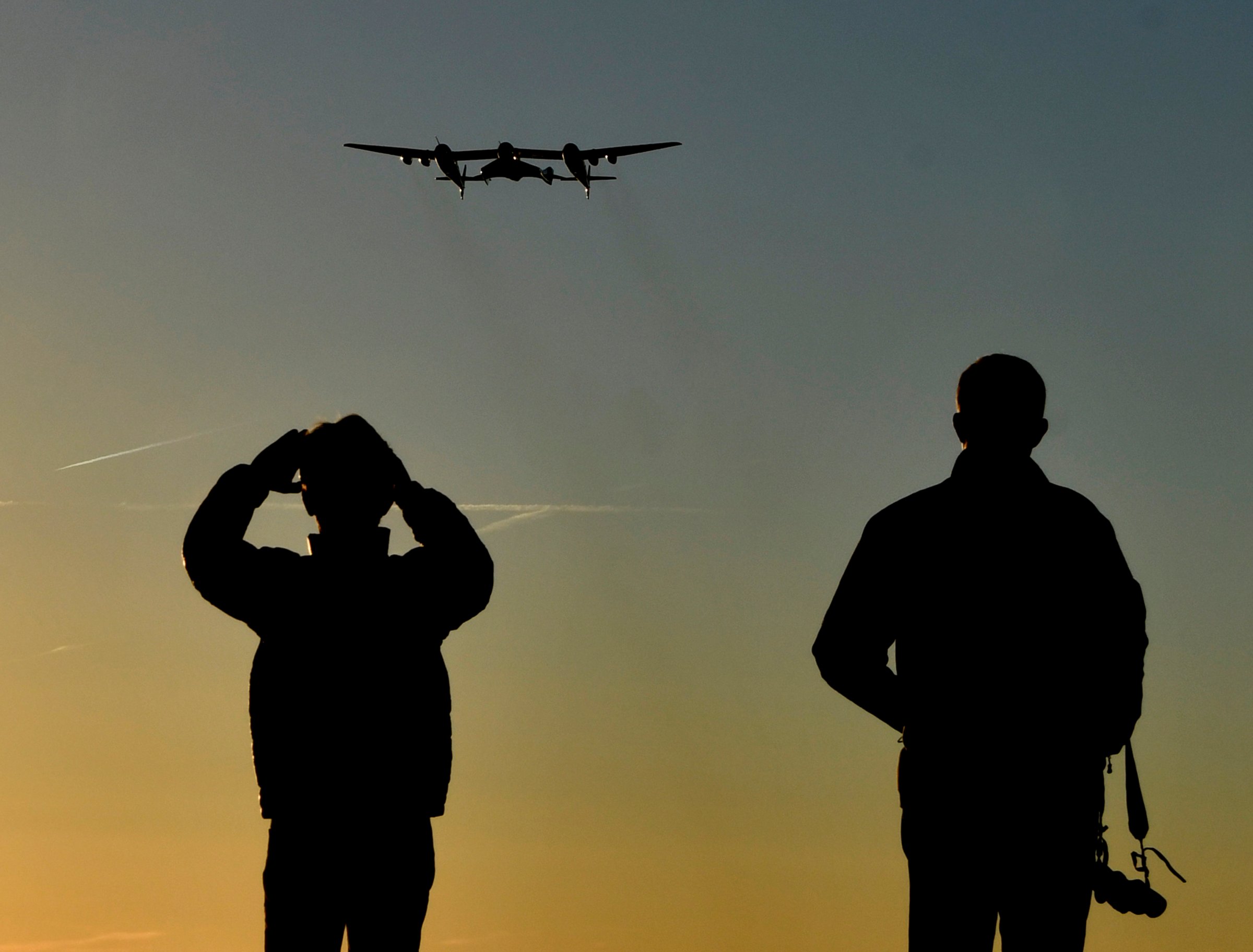
For the first time in a very long time, Sir Richard Branson has some good news to report from the spaceport he built in the Mojave desert: at 7:11 a.m. Pacific time Thursday, his Virgin Galactic company at last succeeded in launching honest-to-goodness astronauts into honest-to-goodness space. Sort of. Maybe. If you’re grading on a really, really generous curve. But that’s not the breathless way the news is being framed.
The bare facts of the flight are not in dispute—and indeed amount to a nifty bit of engineering and flying. Virgin Galactic’s eight-seat VSS Unity spacecraft, with pilots Mark “Forger” Stucky and C.J. Sturckow aboard, was carried aloft by the WhiteKnightTwo mother ship. At an altitude of 43,000 feet, the mothership released the Unity, the pilots fired their engines and accelerated to Mach 2.9, or nearly three times the speed of sound. The ship climbed to a maximum altitude of 51.4 miles and performed a graceful backflip in near-zero gravity before returning safely home.
Nice—and probably a lot of fun if you’re an extremely experienced and well-trained flier, which Stucky, a former U.S. Air Force pilot, and Sturckow, a former NASA astronaut, are. Sturckow had been to space on four different missions, Stucky never had been. Both got technical credit for a space flight Thursday, since the U.S. government—at least some branches of it—formally recognize 50 miles as the edge of space.
The goal, for Virgin Galactic—as it has been since the company’s founding—is to prove the system is safe and reliable and to begin flying tourists, who will pay $250,000 for their chance to get astronaut pins too, courtesy of a quarter-million dollar holiday that will last about twenty minutes. So far 600 people have signed up and put down a deposit.
This—not to put too fine a point on it—may be a flawed business model. Start with the timeline. The chatter today is that Virgin Galactic might be “just months away” from taking its first group of tourists to space. But the company has been just months away for a long, long time now. The hype began in 2004 when Branson acquired the technology that, the same year, allowed SpaceShipOne, built by Mojave-based Scaled Composites, to win the Ansari X prize, becoming the first private vehicle to send an astronaut across the threshold into space.
By 2008, Branson was predicting that passengers would start flying within 18 months—and the first of the 600 vacationers began signing up. By 2009, the promise was for 2011. In 2014, Branson and Virgin suffered a devastating setback when a crash of an earlier version of the spacecraft killed one pilot and injured another. Virgin has since been quiet about deadlines; even in anticipation of Thursday’s test, the company hedged, releasing a statement stressing that “incremental flight test programs are by definition open-ended and, to a great extent, each test depends on the data from the test that precedes it.” Nothing the company has said Thursday, even in the flush of success, ought to get the people on what is now a 10-year waiting list packing.
That’s a good thing, because every day they don’t go is another day to consider whether they should go. Space travel is insanely hard, wildly dangerous and—barring a breakthrough technology that doesn’t require setting fire to thousands or millions of gallons of fuel and hurling giant machines to hideous speeds—it always will be. A Virgin flight will subject passengers not just to speeds of over 2,000 miles per hour, but to a g-load peaking at six, which means if you weigh 150 pounds on Earth, you’ll feel like you weigh 900 pounds. Astronauts and professional pilots can eat more g’s than that both in centrifuge training and in flight but, see above: “astronauts and professional pilots.”
Then, too, there’s the question of what constitutes space at all. That 50-mile limit is a handy threshold for Virgin, but it also overturns longstanding precedent—cooking the cosmic book in a way that makes things look easier than they are. The most broadly accepted definition of the bottom boundary of space, known as the Kármán line—for the Hungarian-American physicist and mathematician Theodore von Kármán—is 62 miles, or 100 kilometers.
Alan Shepard, America’s first astronaut, got the country into the space game with a 1961 suborbital mission that achieved a peak altitude of 101.2 miles. Even SpaceShipOne’s prize-winning flight, which didn’t climb nearly so high, cleared the Kármán line relatively easily, at 69.6 miles. Virgin’s flight Thursday fell nearly 11 miles short of the mark. The tidy 100-kilometer line itself might have a little arbitrariness to it, but it’s a definition that’s stood for a long time and changing it now is its own kind of arbitrary.
Whatever Sturckow’s and Stucky’s flight is called—wherever they’re said to have gone—there’s no denying that plenty of people would like to follow them there. In the run-up to Thursday’s flight, lay handicappers were already speculating whether it would be Branson and Virgin or Jeff Bezos and his Blue Origin rocket company to fly paying passengers first. Branson himself, whose spokespeople may be saying all of the right, cautious words today, is on record as recently as May as saying the two are “neck and neck.”
They might benefit from asking themselves why. Both men are engaged in a small-bore race for very low stakes—a 50-mile lob shot to a sorta, kinda space—a pale parody of the U.S.-Soviet contest that got Americans on the moon. In both cases, the danger is mortal; in only one case was it worth it.
More Must-Reads from TIME
- Cybersecurity Experts Are Sounding the Alarm on DOGE
- Meet the 2025 Women of the Year
- The Harsh Truth About Disability Inclusion
- Why Do More Young Adults Have Cancer?
- Colman Domingo Leads With Radical Love
- How to Get Better at Doing Things Alone
- Michelle Zauner Stares Down the Darkness
Write to Jeffrey Kluger at jeffrey.kluger@time.com